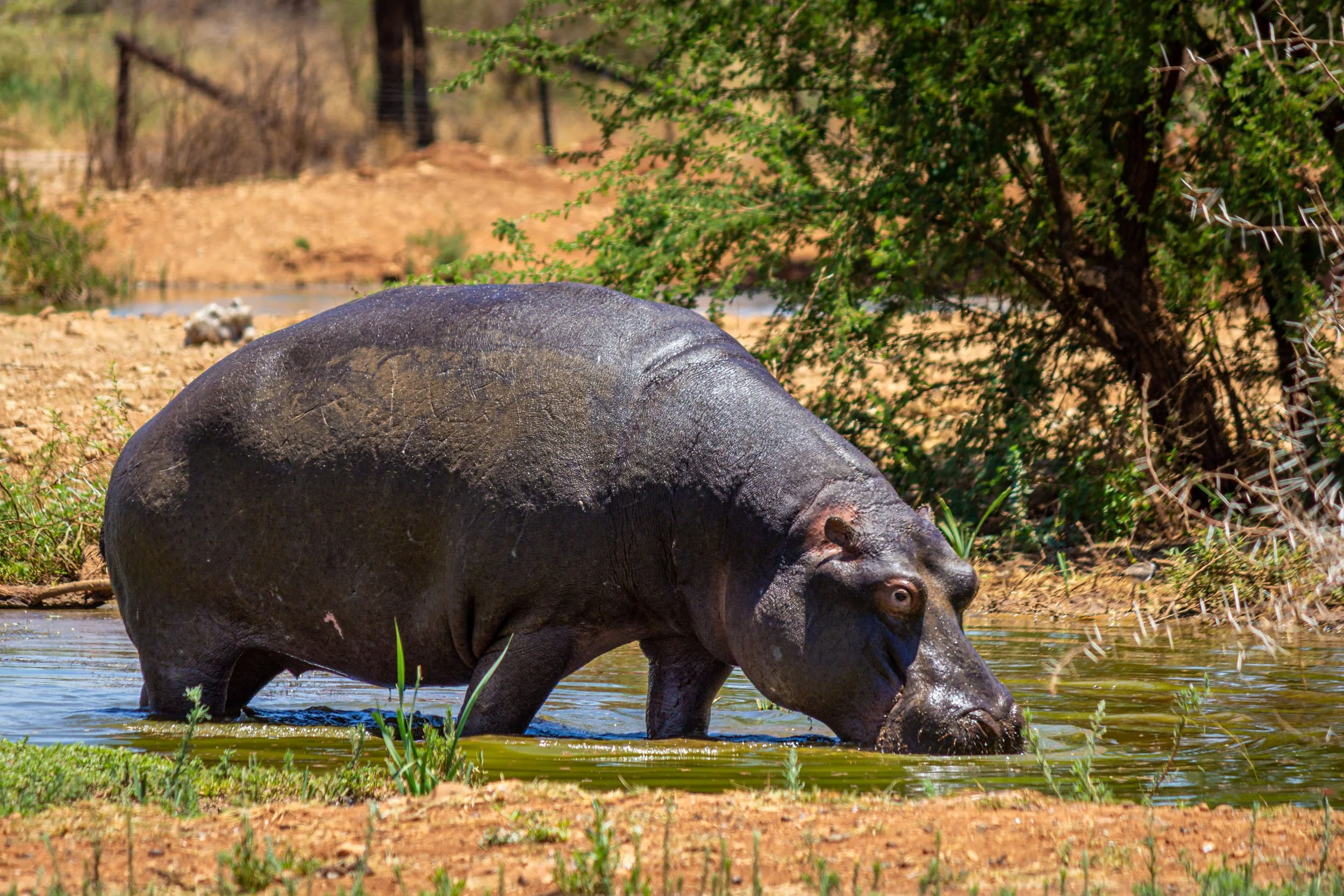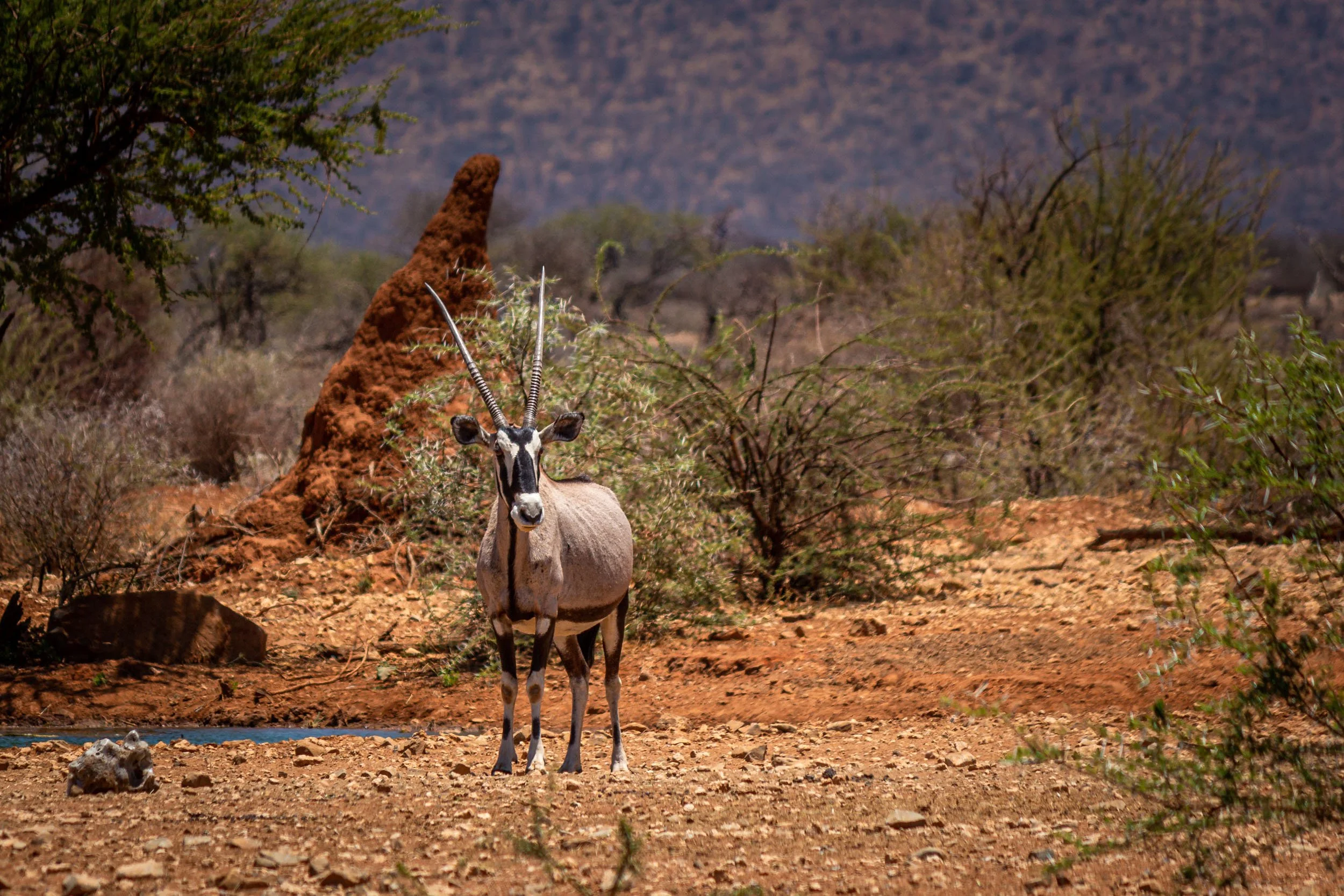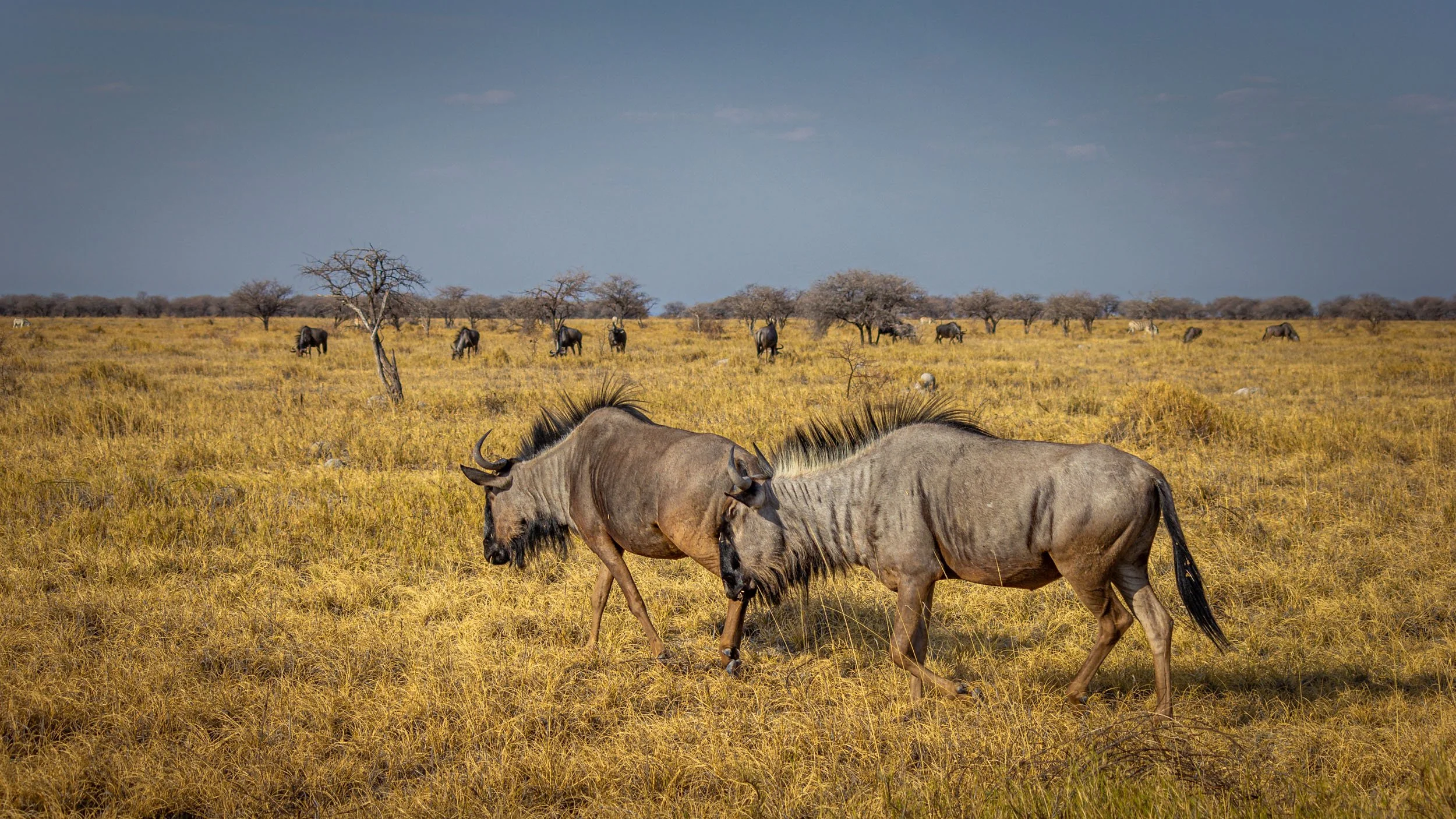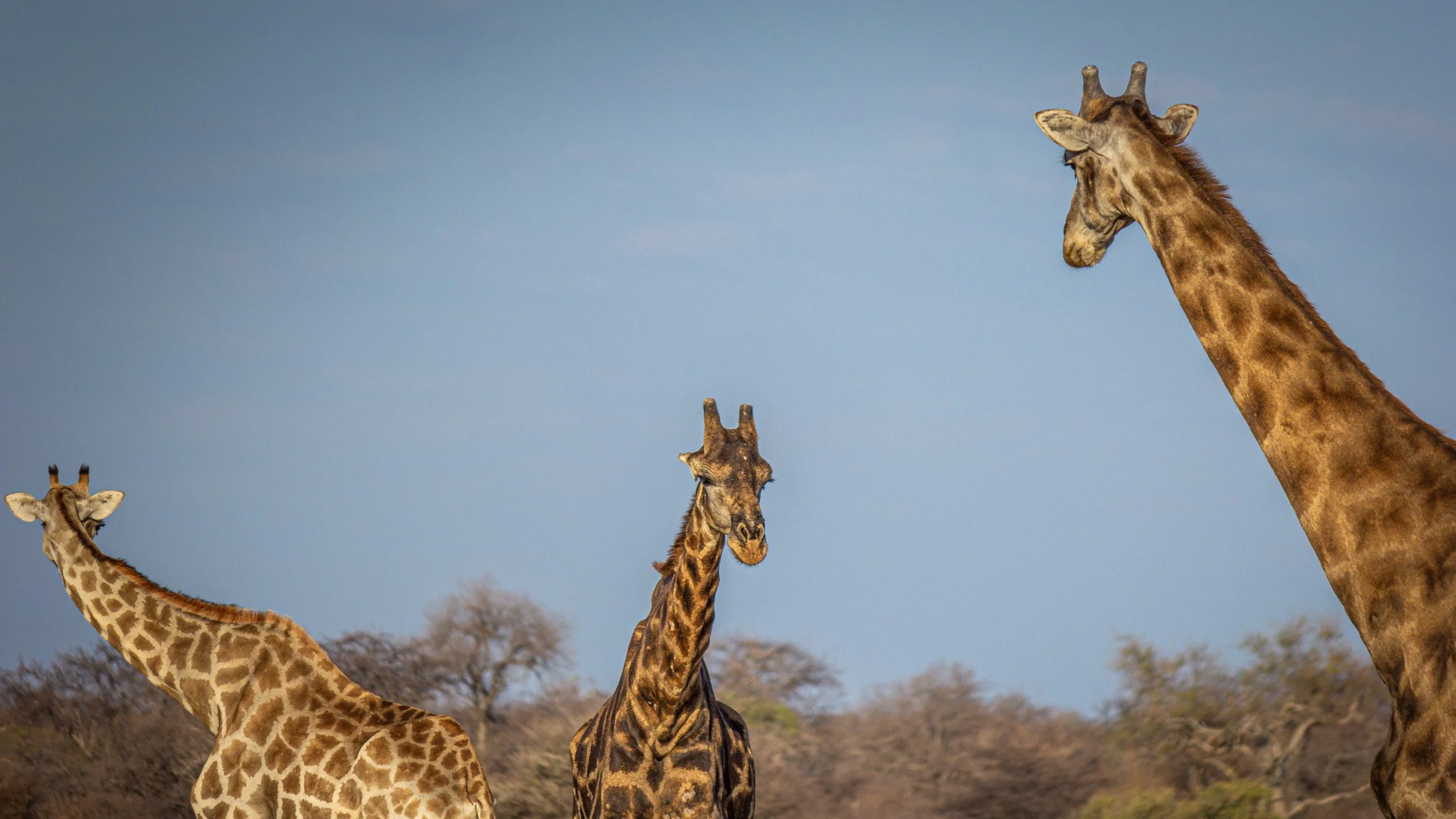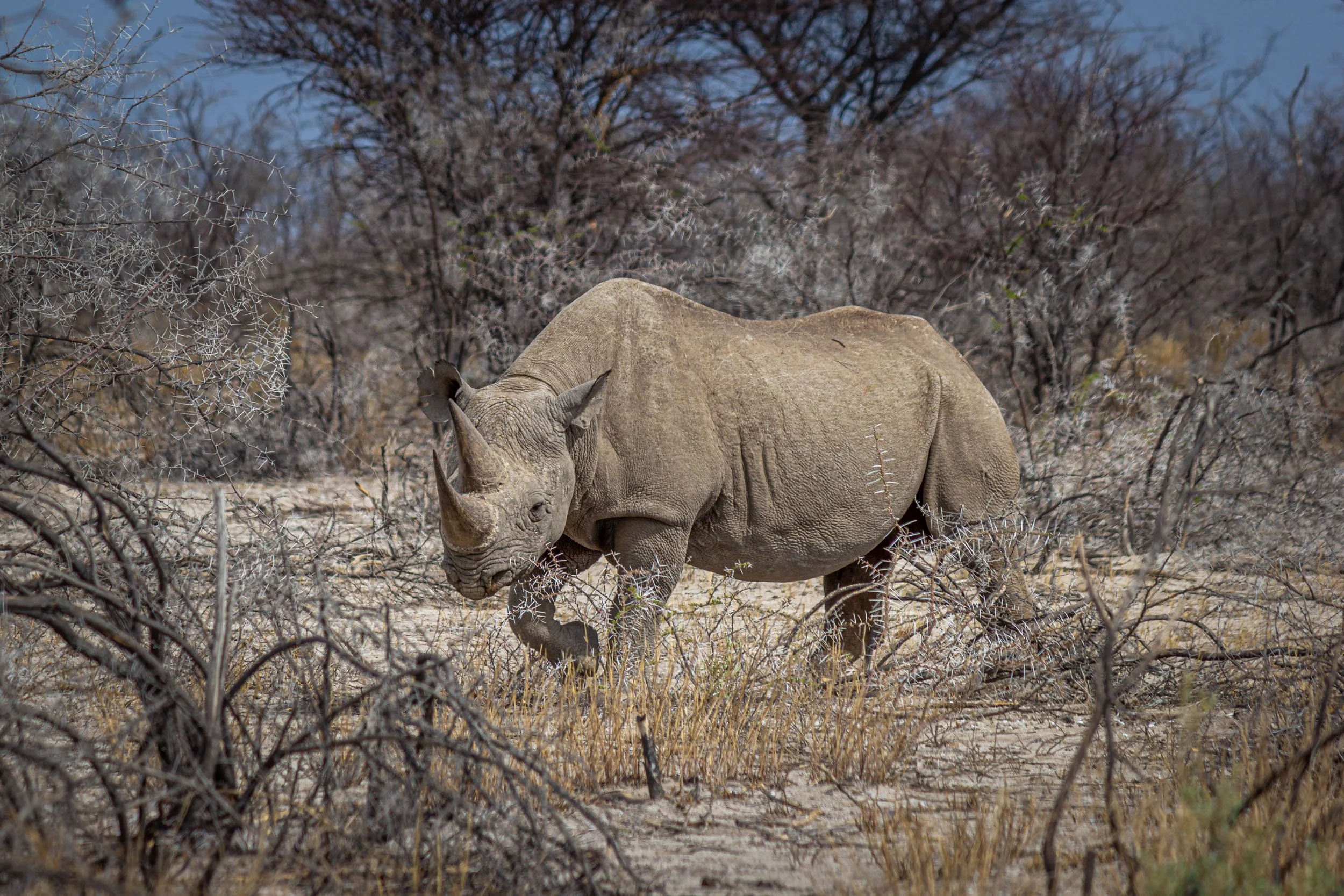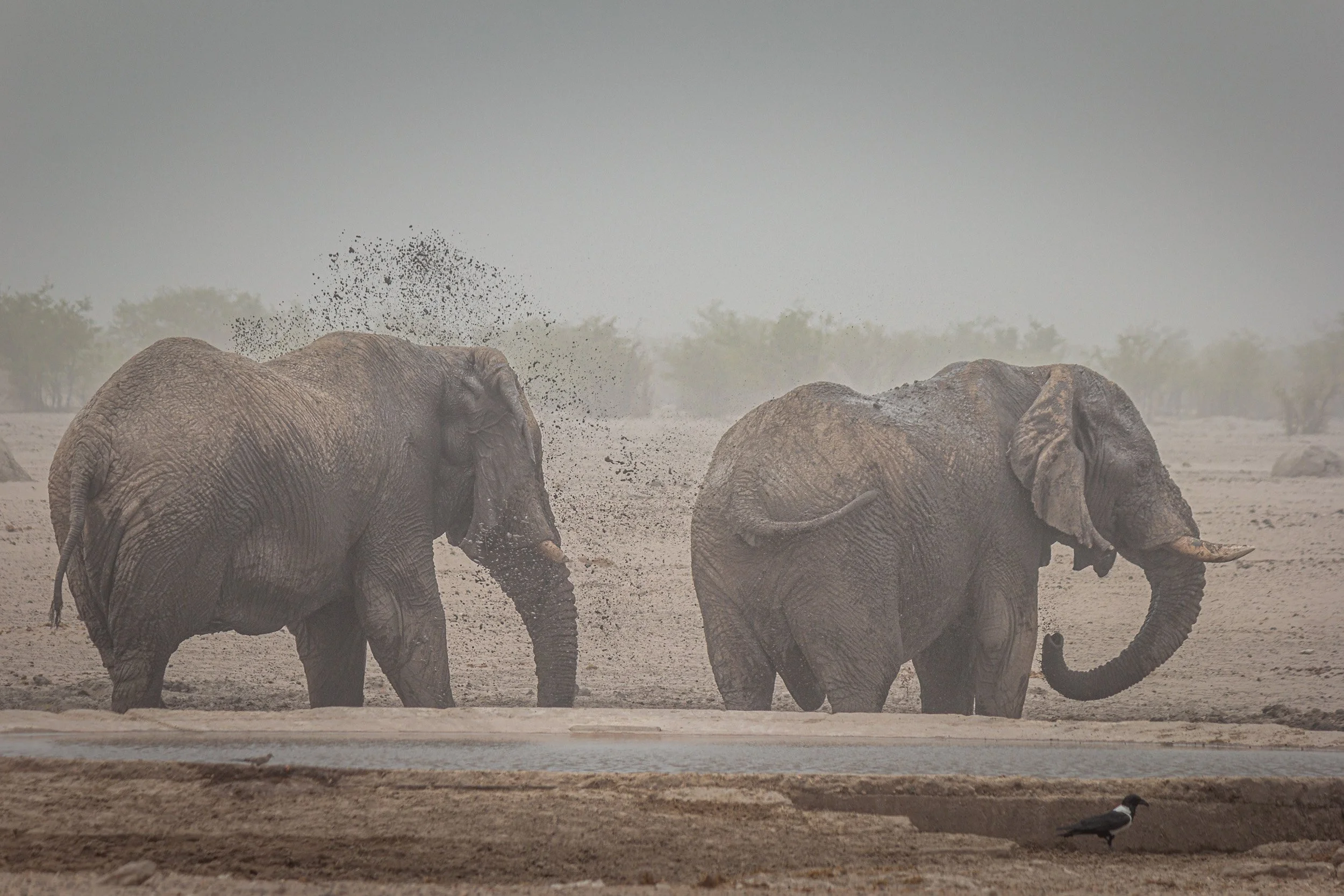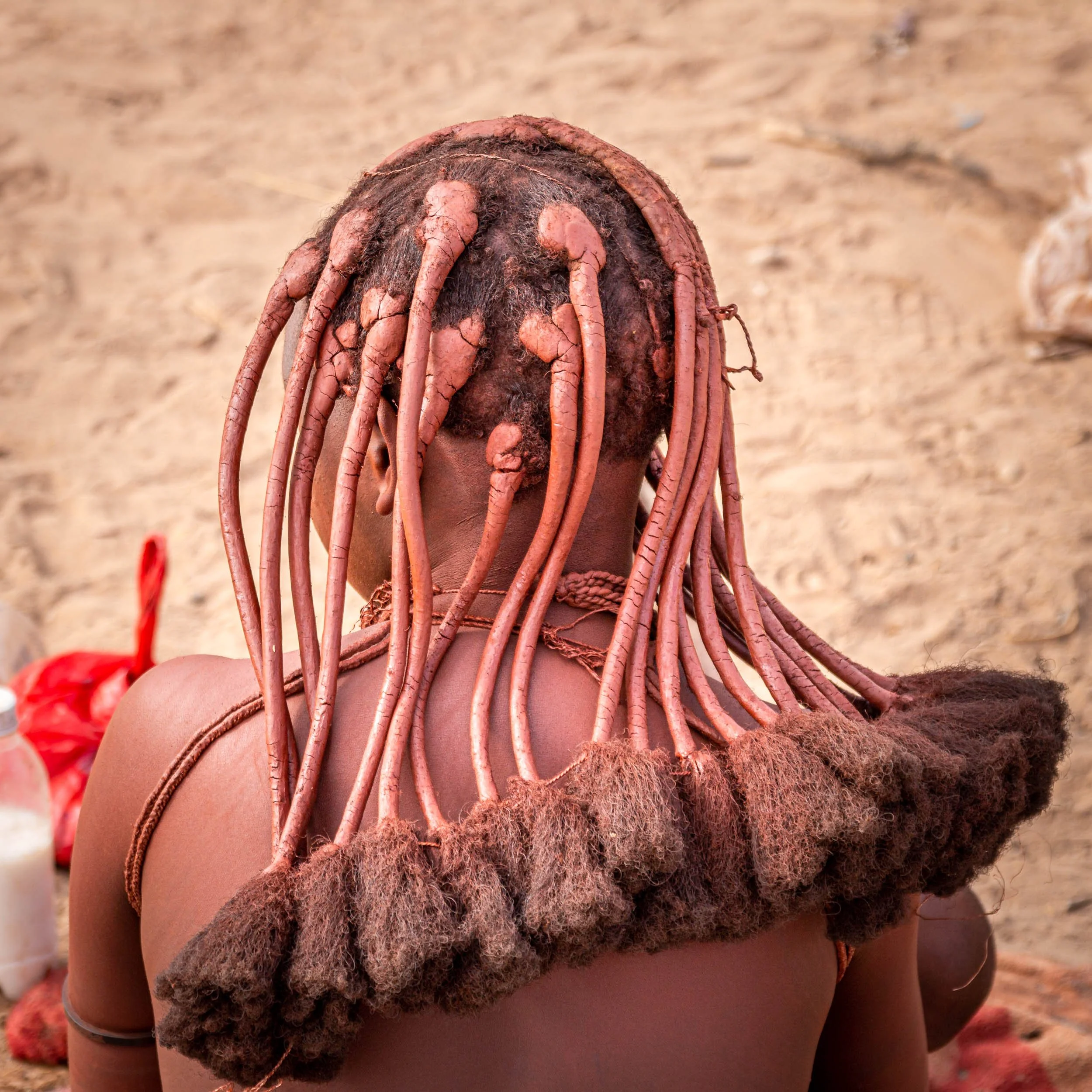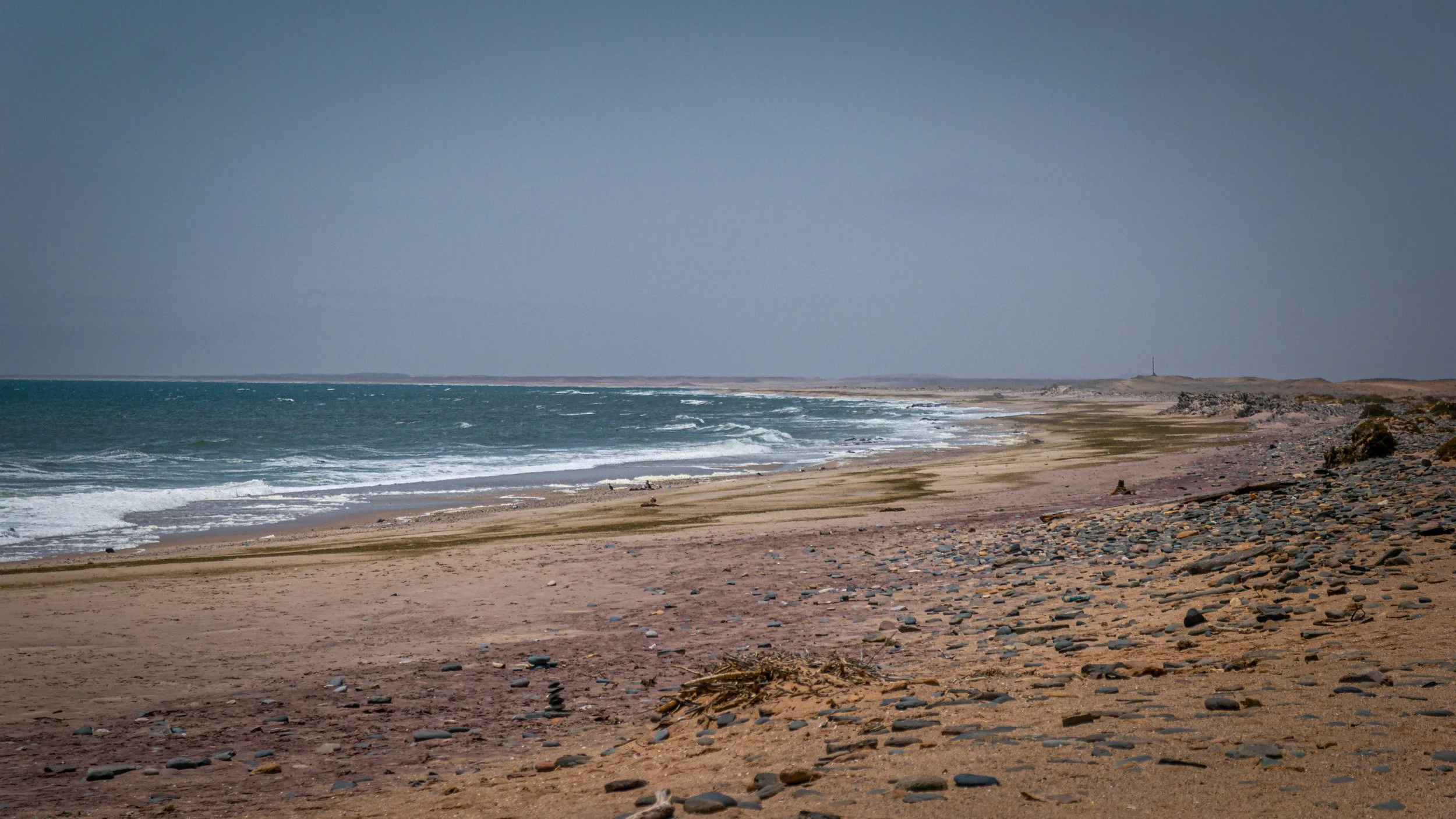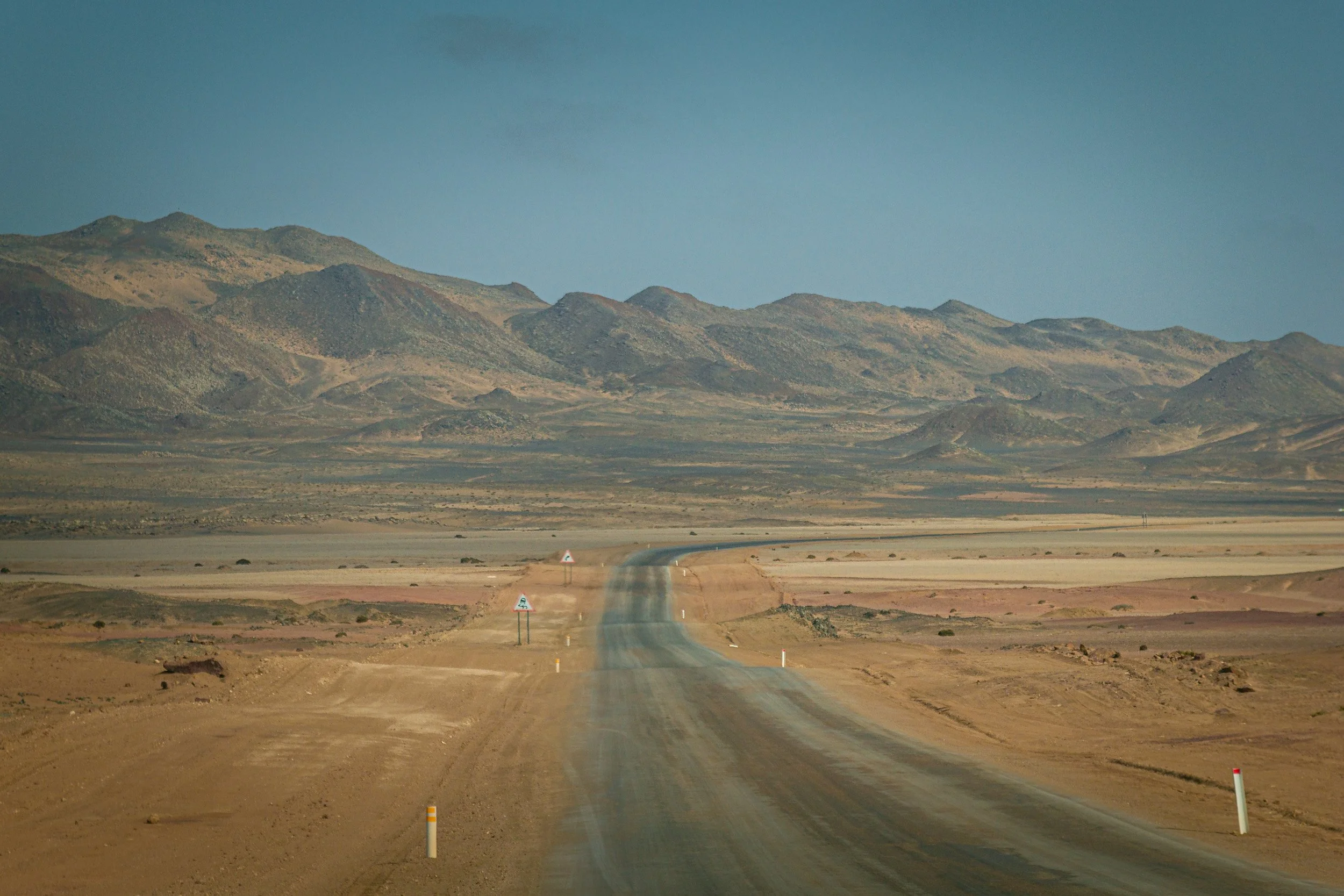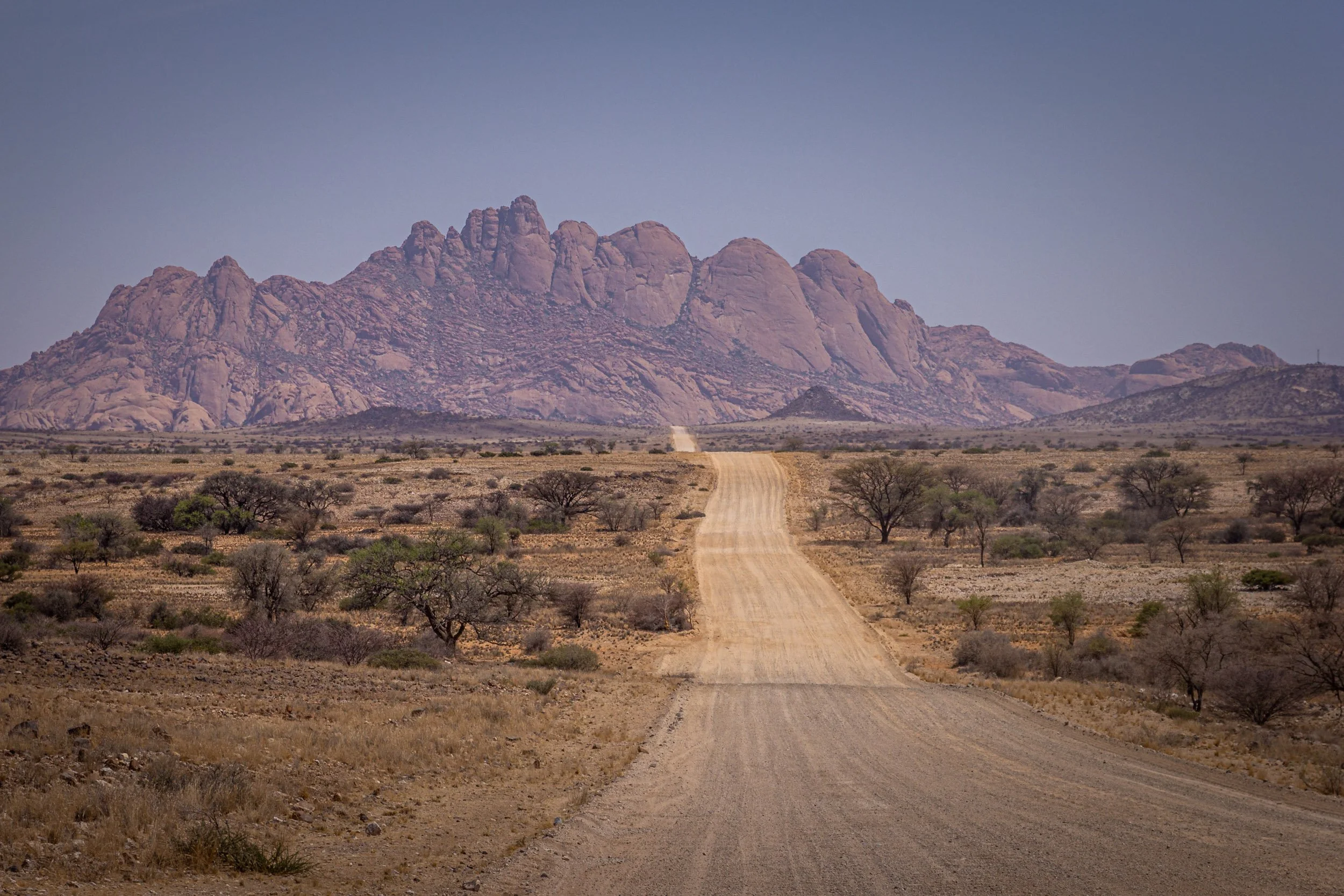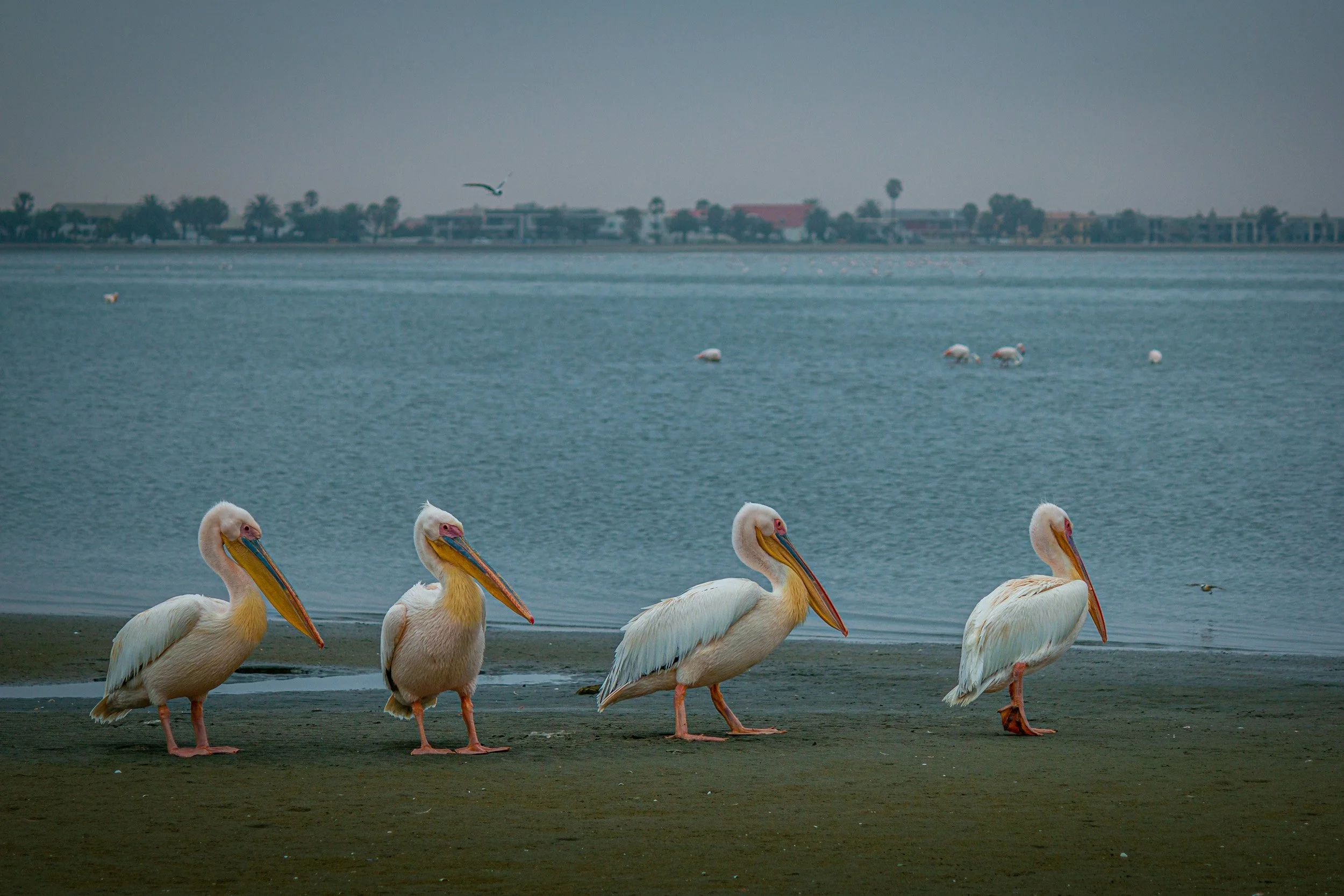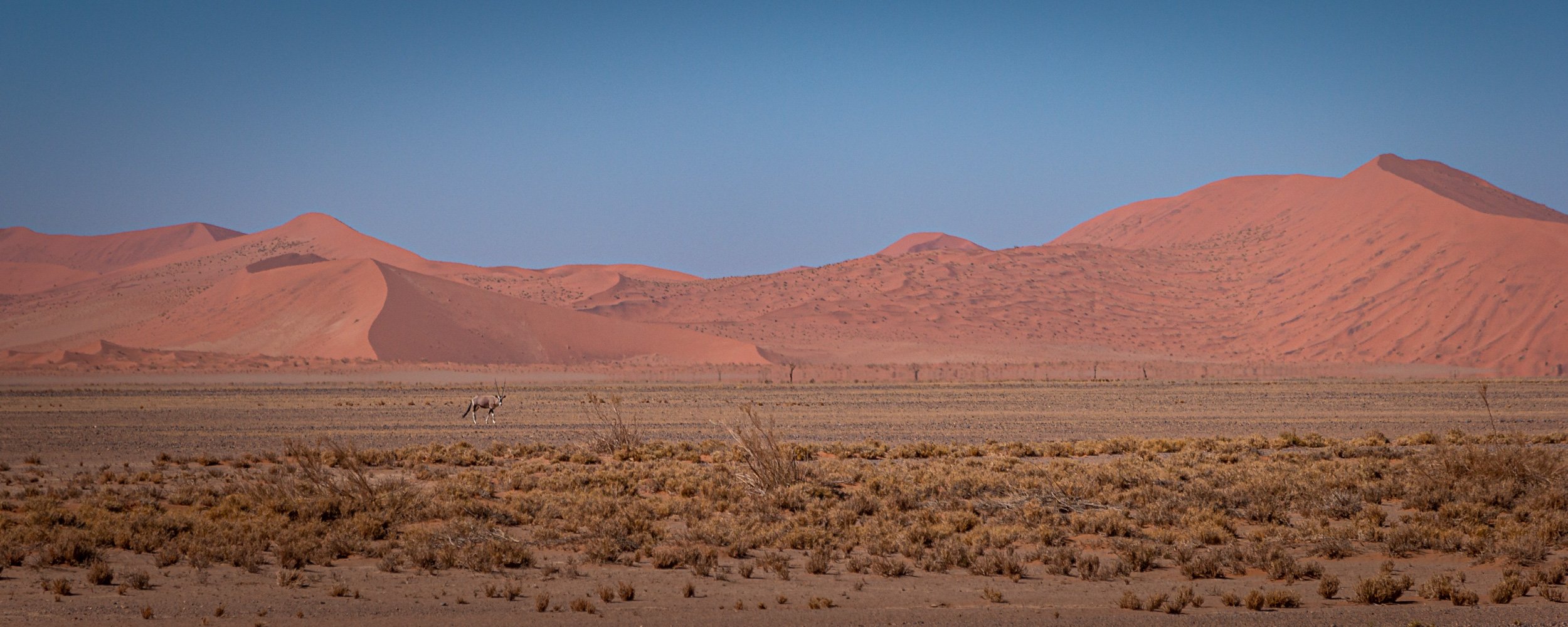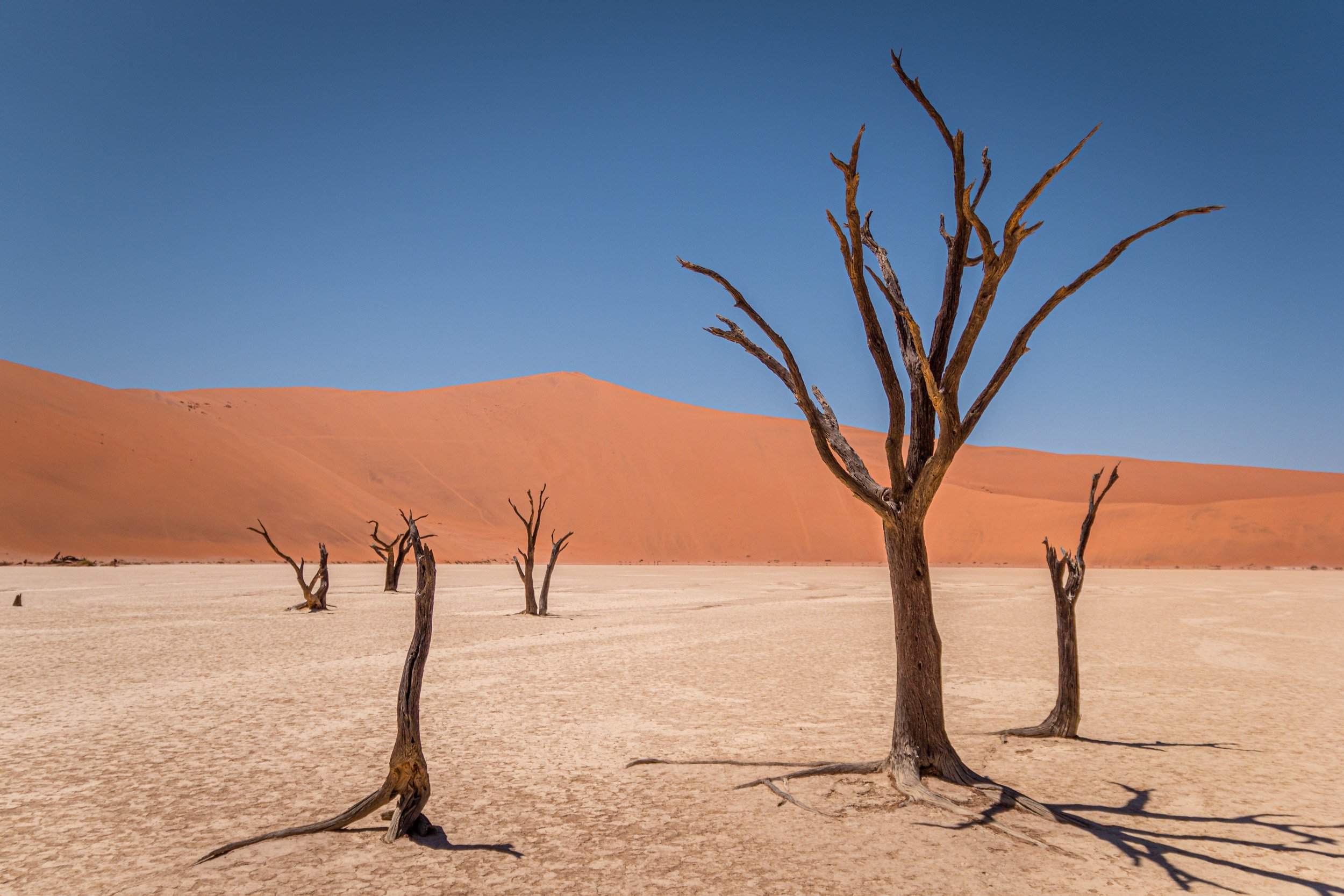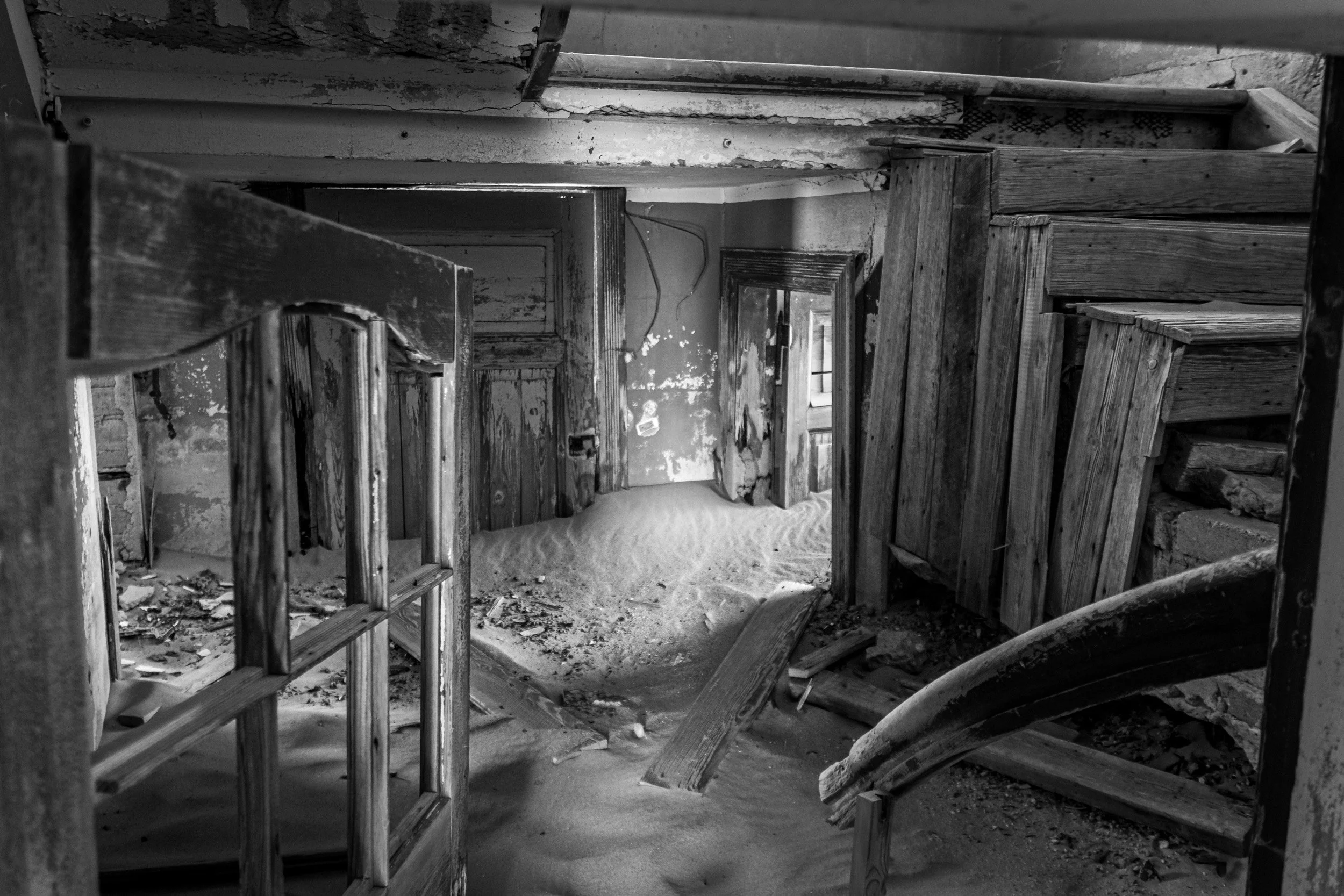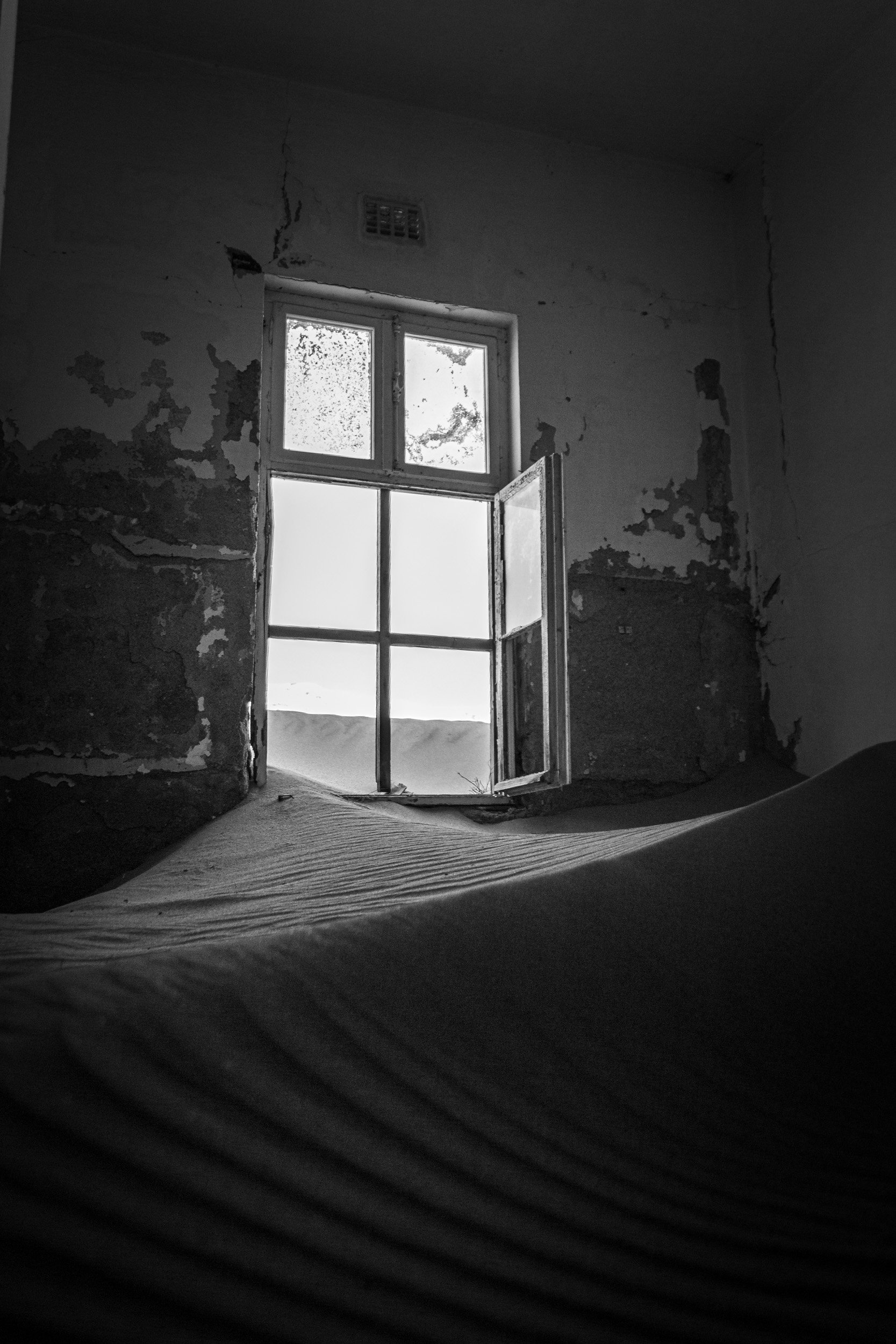
Namibia
In 2015 I visited the African continent for the first time. Though I spent a week on a beach in Tunisia when I was a kid, I don’t really count that as having explored a country or at least a part of it or even the continent.
Details
Visit: October 30th - November 17th 2015
Season: End of Dry Season
Start / End: Windhoek
Transport: Rental Car (4x4)
I went with a friend and we decided on Namibia because we thought that South Africa might be overcrowded at the time and we wanted to go to a not so popular place which was still easy and safe to travel through. We were also thinking about Botswana or doing both Namibia and Botswana together, but decided to just do Namibia as it has so much to offer and it’s logistically easier to only visit one country.
Our itinerary brought us to the famous spots like Etosha National Park, Sossusvlei and Fish River Canyon, but we also went to (potentially) less visited places like Opuwo, Swakopmund and Lüderitz. It was my first time on Safari and I loved it! But not only the Safaris blew me away, this whole country with its amazing landscapes and fascinating culture is worth a visit. I only wish that I'd taken some images of the night sky, but I wasn't into star photography then. You’ll always find a reason to come back to places that you liked and this is mine for Namibia, I guess.
Top 5 places / experiences
-

Etosha National Park
-

Fish River Canyon
-

Dead Vlei
-

Kolmanskop
-

Cheetah tracking drive (NCCC)
Erindi Game Reserve & Waterberg Plateau
We started our trip in Windhoek, but we only stayed for the night and headed northwards first thing in the morning. We made a stop at Erindi Game Reserve to see the First wildlife on our trip and continued to our first overnight destination: Waterberg Plateau National Park. We stayed at a lodge from NWR (Namibia Wildlife Resorts) which is owned by the government and provides lodges at National Parks, often exclusively. The booking process was a little bit more difficult than the usual platforms, but we did book accommodations with them not only in Waterberg Plateau National Park but also Etosha National Park so we could stay in the park during night and did not have to leave it every day. The Plateau does not only provide great views over the plains of the Kalahari of Eastern Namibia, you can also go on game drives to watch some of the animals living there. We booked one in the morning, but we didn’t see as many animals as we hoped for, unfortunately.
Etosha National Park
That would change with our next item on our itinerary: Etosha National Park. We booked three nights inside the park going from East to west: Namutoni Resort, Okaukuejo Resort, and Dolomite Resort. In hindsight I would say that 3 nights are the least you should spent in the park, even more if you can as everyday is different. We weren’t exactly early birds in the morning, but I would try to go out as early in the morning as possible or even book a game drive if possible.
However, I‘m totally happy how our drive through the park went. We spent all day in the park driving from waterhole to waterhole and saw so many emails, though it was always a gamble whether you would find something at a water hole or not. As you can see in the pictures we saw elephants, black rhinos, zebras, giraffes, wildebeests, springboks, red hartebeests, lions and many more! We’ve got a map of what animals you would see in the park, so I‘ll check that against my photos soon!
The three days were simply amazing and I just loved being on safari all day. I wouldn’t get bored by the hundredth zebra or giraffe, it was always a pleasure watching and photographing them. Hopefully I‘m gonna be able to do that again, soon!
Opuwo & Twyvelfontein
From Etosha we first drove even more northwest to Opuwo where we stayed at Opuwo Country Lodge. Here you can enjoy great views over the Koakoland. This is the least populated area in Namibia. Almost one third of the population are Himba people and we booked a driver to show us a village nearby to see how they live and learn about their culture.From now on we headed southwards. Our first stop was Twyfelontein where we visited Burnt Mountain, an expanse of volcanic clinker that really looks like it’s been burned, and the Organ Pipes, a rock formation of columnar basalts. Twyfelfontein is also know for rock carvings and was the first UNESCO World Heritage Site of Namibia.
Sceleton Coast & Swakopmund
Our next stop was Henties Bay as we wanted to explore the Skeleton Coast. It’s an exciting drive sandwiched between the Atlantic oceans with rusting shipwrecks lying on the beaches and wandering dunes. The number of shipwrecks is not too high anymore, though, and you have to put in some effort to see them by driving a 4x4 road to the ocean or walk a little. Be aware that this area is not very populated and you‘re kind of on your own there.
Our next stop was Omaruru to explore the Damaraland, home of the Spitzkoppe and the Brandberg. The Spitzkoppe is 1728 meters high and rises above the dusty pains of southern Damaraland. Because of its shape sometimes it’s being referred to as Matterhorn of Africa. The Brandberg is Namibia’s highest mountain with 2573 meters and it’s name means Burning Mountain because of its glowing colour sometimes seen at sunset. It’s not only a spiritual site for some people, it’s also famous for its rock paintings, the most famous one being called „The White Lady“. There is thousands more of them to be found. If you want to explore the paintings and the mountain you have to get a guide that shows you around. It’s a fixed price, but our guide decided to renegotiate before bringing us the White Lady. It’s still not much and you should give some tip, anyway, so we did give him something extra, though we didn’t like how it went. It takes about 45minutes to get to the White Lady and a little less going back. We also saw some elephant tracks on the way and the guide told us that they left the area a few days ago and pointed us into the direction where they went, and in return we gave him a ride to his home. Luckily, we actually found the elephants but we didn’t get a good view for photos.
We headed back to the coast the next day to go to Walvis Bay. On the way we made stops at Phillips Cave where we you can find rock paintings of humpbacked white elephants and Swakopmund, Namibia’s main beach resort that doesn’t really have warm water in summer (only 15 degrees max!) but reminds you of German towns on the North Sea, not considering all the sand and palm trees, of course. Walvis Bay itself is known for its flamingos and is popular for tourists as an alternative to Swakopmund.
Solitaire: Cheetahs & Namib Dunes
The road brought us back to the center of Namibia to explore one of the main sights in Namibia: the deserts of Namib-Naukluft National Park. We stayed in Solitaire because other accommodation in Sossusvlei or around wasn’t available or affordable. Luckily, we arrived at the lodge in Solitaire just in time to join a Cheetah tracking drive by the Namib Carnivore Conservation Centre (NCCC). They take cheetahs from areas where they risk being shot by farmers and relocate them to safe areas. They had 6 permanent residents, too, as some cheetahs came to the Centre as orphans and did not learn to hunt. We were able to leave the car and watch them being fed at sunset - something you won’t forget!
The next day we went out to Sossusvlei early in the morning and explored the sand dunes of the Namib-Naukluft National Park. We also saw some Oryx on the way! Some of the dunes are easier accessible then others, the most famous one is Dune 45 which is a 45 kilometers drive from Sesriem. My personal highlight awaits you at the end of the road: Deadvlei. It’s a white clay pan with dead trees surrounded by 300 to 400 meter high dunes. You can drive there by yourself if you have experience driving a 4 wheel drive on sand, but there is also a shuttle that starts at the point where you‘d need a 4WD and brings you to Deadvlei. Bring lots of water as it gets hot quite fast. According to the Thermometer of our car it was 44 degrees when we arrived at the car park and there was no cloud in sight. We walked to the pan and even climbed up one of the surrounding dunes which was really, really exhausting, but the views were stunning once you’re at the top of the dunes!
Southern Namibia
We only made a stop at Maltahöhe our of logistical reasons, as we left the dunes in the afternoon and did not want to drive the whole way to our next destination. In southern Namibia we actually had 2 more items on our itinerary: Lüderitz and Fish River Canyon.
On our way to Lüderitz we made a stop at Garub Pan which is home to an artificial waterhole where you find feral desert horses. Lüderitz itself felt really weird. It looks like an old German coastal town located between sand dunes and the ocean. It also gets extremely windy in the area. Here we didn’t just explore the town and it’s German architecture, we also drove to Diaz Point on Lüderitz Peninsula. You can’t go to the cross as the bridge was destroyed in 2014, but the views of the rugged coastline are nice. We didn’t stay long because of the stormy weather which is usual for this time of year. If you decide to go to visit Lüderitz one of the reasons probably is the ghost town of Kolmanskop. Once a lively place with a theatre and casino, it has been deserted since 1956. We first joined a tour and learned a lot about the history of the town (recommended!) and then took some time to explore and take photos. The tours are in German and English. Be aware that Kolmanskop is only open until 1pm, so if you want to explore the place before sunrise go check out the photo permit that you have to buy in Lüderitz. You can take photos with all of the different permit types, but if you want to use it commercially I would advise to check with the tourist office.
The second item on our list for southern Namibia was Fish River Canyon, the second biggest canyon in the world, though it’s much smaller than the Grand Canyon. But that doesn’t matter when you’re standing at one of the viewpoints, in fact it’s simply a stunning view. We booked one night at a lodge in Kanebis on the eastern part of the canyon and one night at the Fish River Lodge on the western part. The views are great from both sights, but if they have vacancy and you can afford the extra price then I can only recommend staying a night or two at the Fish River Lodge. It’s located directly on the edge of the canyon and the view from everywhere is just amazing, may it be the restaurant, the pool or one of the chalets. There is also a short hike to another great viewpoint of the canyon. The two things that you should keep in mind is that the road to the lodge is horrible and that it can get a bit chilly and windy here. It was actually so windy that I woke up a couple of times during the night. Still wouldn’t want to miss that experience!
Going back to Windhoek
What’s left is our way back to Windhoek that we splitted into two days of driving with a stop in the middle in Mariental. Before we went to our lodge we visited the Hardap Dam and the Hardap Game Reserve where we saw some but not much wildlife. Worth a visit if you’re in the area, no more, no less.
Our lodge was situated directly at a waterhole which wasn’t fenced or anything like this, so when we wanted to go back to our room there was a rhino blocking our way. Was great to watch it and we found our way back after a while, but unfortunately not everyone at the lodge was thinking about how to not disturb the rhino - some people even used the flash to photograph it.
On our last day we drove to Windhoek and did some sightseeing of the most famous spots (Christ Church, Independent Memorial Museum, Tintenpalast) before we went to our hotel and left for Germany the next morning.




